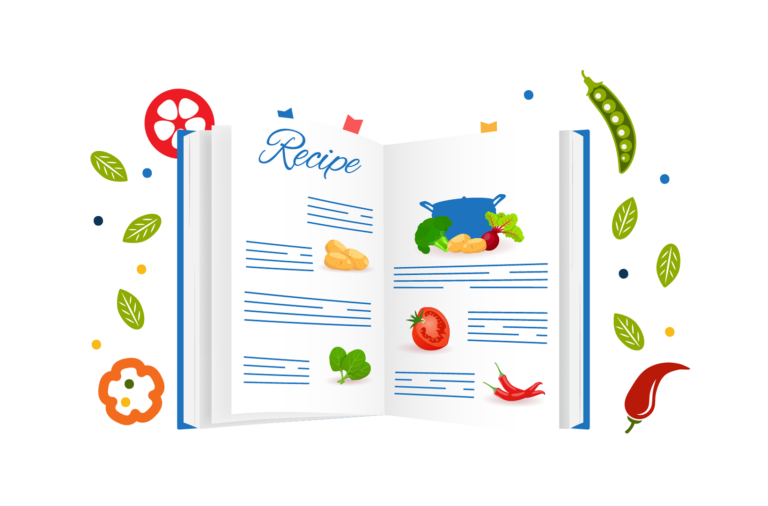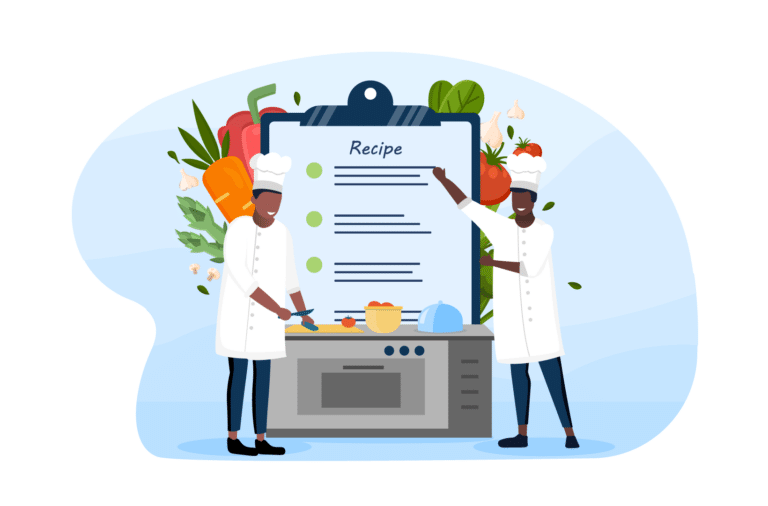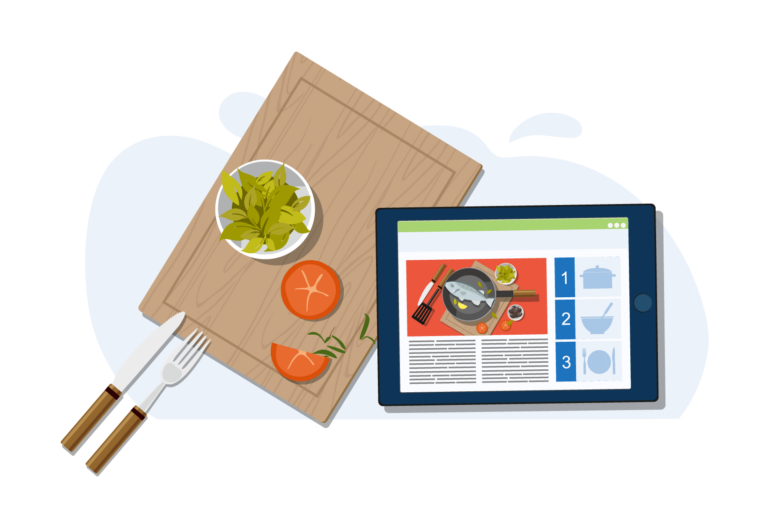Recipe testing is one of the most difficult parts of being a food blogger. It can be time-consuming, and the precision required to get it right can make the process daunting. And yet, it’s also critical to the process of creating and sharing recipes. You need to spend time perfecting the flavor profile of each dish, nailing down ingredient amounts, and getting the timings correct.
Recipe testing combines creativity and analytical skills. You’re not just checking that your dish tastes good but also that it can be accurately recreated by your blog readers. It can be a tough task, with multiple challenges. This article will address some of the key concerns you might have, from maintaining consistency in your recipe to organizing multiple recipe tests. Keep reading for tips on how to successfully test recipes for your food blog.
Why recipe testing is important
Recipe testing is a step you can’t skip if you want to share quality new recipes on your blog. It might take time, but its purpose is to produce dishes that both taste delicious and can be replicated consistently.
Testing a recipe gives you the chance to check the measurements of each ingredient, the timing, and the instructions. All of these elements need to come together to produce the same results so that your readers all get the best experience each and every time. This is always important, but it’s vital for baking, where exact measurements can be the difference between success and total failure.
Of course, you want your recipe to produce something delicious. Recipe testing allows you to perfect the flavors and make sure they’re balanced. Is the curry spicy enough, or is it perhaps too spicy? Do you need to increase the cooking temperature for perfectly crispy potatoes? You can tweak important ingredients in your recipes when you test them to get the perfect balance. This is your chance to experiment and explore. Try out different ingredient substitutions or methods so you can offer more options for your readers.

Another great reason to test your recipes is to help make them more adaptable. People love when there are options they can choose from, whether it’s substituting an ingredient they don’t like or can’t find, tweaking a recipe to their dietary needs, or having a choice of equipment to use. A more versatile recipe will appeal to a broader audience, engaging more readers.
Finally, recipe testing helps you create a recipe that will build your readers’ confidence. If novice cooks are able to get a great result from your recipe, they’ll feel more confident about using you as a resource. They will enjoy the experience more and be more willing to share your recipes, seeing your blog as a credible source of information.
Common challenges in recipe testing and how to overcome them
You can come up against many challenges when you test recipes. It takes time and patience, and maintaining consistency can be difficult. Don’t worry if you’re intimidated by the recipe testing process. This guide will take you through the essential steps.
Staying organized during multiple tests
Organization is vital and will help you make the most of the process. You should aim to keep records as you test your recipe. Taking notes helps you refine your recipe and produce better results. Record every ingredient, quantity, and instruction as clearly as possible so that you can create a useful resource for your readers.
One of the best ways to stay organized and avoid stress is to remember the importance of mise en place. That is, getting all of your equipment and ingredients prepared in front of you before you start cooking. Measure out your ingredients (track quantities by both weight and volume as you test) and prepare them in individual bowls. Gather all the equipment you need, too. This might take time, but it will mean you have all that you need in front of you.
After each test of your recipe, ask yourself some key questions:
- What worked well?
- What needs improvement?
- What changes shall I try?
Make sure you only change one thing per test so that you have a clear picture of how the change had an effect. As you’re preparing your recipe, ask yourself if there’s any way you can improve the method. Are there steps that can benefit from more detailed instruction? Can you give advice on what the dish should look like at particular stages, or how your readers could do things differently?
Maintaining consistency: The ultimate test of a good recipe
Consistency is key for recipes. A good recipe needs to produce the same results every time it’s followed. There are multiple variables that could affect the consistency of a recipe, including the ingredient quality and quantity, cooking temperatures, and measurement accuracy.
Use the same measuring tools each time, take extensive notes, and be aware that ingredient quality can vary and affect your results. These details can all be useful for anyone who follows your recipe, too. For example, you might advise them to use scales instead of cups.
Be as specific as you can with your ingredient amounts. For example, instead of just “two eggs”, advise on the size of the eggs. Instead of one onion, tell them exactly how much they should have in cups when chopped.
For the best results, try to get someone else to test your recipe. This helps to ensure your recipe can be followed by someone else. They can identify potential issues that you might not have noticed, let you know if the instructions were easy to follow, and tell you if their outcome was the same.
Showcasing your tested recipes with WP Recipe Maker
When your recipe has finally been perfected, it’s time to showcase it on your food blog. You don’t want this to be any harder than it needs to be, which is why you need the right tools to help you do it. WP Recipe Maker is a WordPress plugin that has been designed with food bloggers like you in mind.
WP Recipe Maker is a user-friendly plugin that includes ready-to-use recipe templates. You can edit and personalize the templates so they fit seamlessly with your blog, creating a consistent look. When you install the plugin, you benefit from a range of great features that help you highlight your recipes. Once you’ve tested your recipes, you’ll feel more confident publishing them for other people to use.
The comment ratings feature from WP Recipe Maker is a great one to help promote your recipes. Visitors can rate your recipes and leave comments, helping to reassure other people who want to know if it’s worth trying a recipe. Feedback from your users can also be extremely useful to give you ideas on how to refine and test your recipes further, giving you an opportunity to improve!

If you want your blog to appeal to an international audience, you’ll need to think about providing different measurements. WP Recipe Maker comes to the rescue here with the unit conversion feature, which lets you skip the painful math. Adjustable serving sizes are easy too, thanks to the adjustable servings feature. The advanced version of this feature is perfect for baking recipes, giving readers the option to perfectly adjust measurements to match the size of their cake tin.

“The adjustable servings feature on recipe cards is like having a culinary safeguard. It ensures that whether you’re making a small family dinner or cooking for a crowd, the essence of your dish remains spot-on. This feature keeps the ingredient ratios intact, so you get the same delicious results every time. It’s not just a convenience; it’s a kitchen tool that respects the science behind a great recipe, making it accessible and reliable for everyone.”
Birthe VandermeerenCofounder of Bootstrapped Ventures
Taking your recipes to the next level
If you want to create reliable recipes that your readers can follow, recipe testing is vital. Yes, recipe testing takes time, and keeping things consistent can be challenging. But if you can stay organized and stick to changing just one thing at a time, you can see success.
The time you spend testing your recipes will all be worth it when they perform well on your WordPress food blog. Reliable recipes will lend credence to your blog, helping you to bring in more traffic. After you have gone through the effort of creating a high-quality recipe, your next step is to make sure you display it on a blog of equal quality. WP Recipe Maker helps to make this possible, providing the features you need to create beautiful, user-friendly recipes.
WP Recipe Maker offers you a great deal of functionality so sharing your recipes is a breeze. You can create a much better user experience with the plugin, while also improving your blog’s visibility.
Take your food blog to the next level by improving both the quality of your recipes and your blog. Get started with WP Recipe Maker to publish your tried-and-tested recipes.







